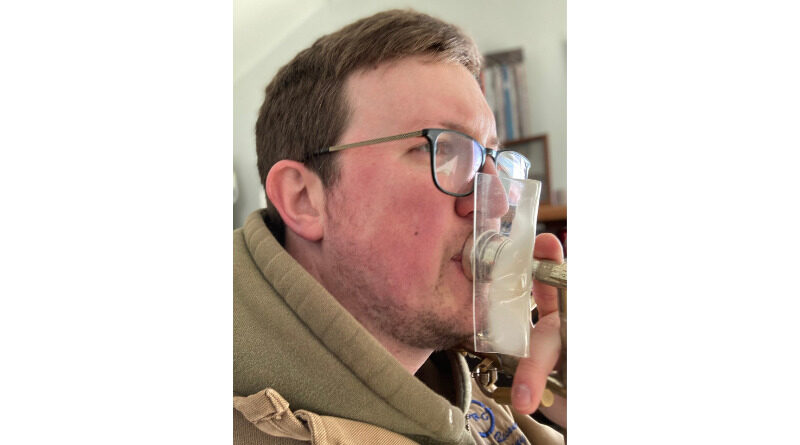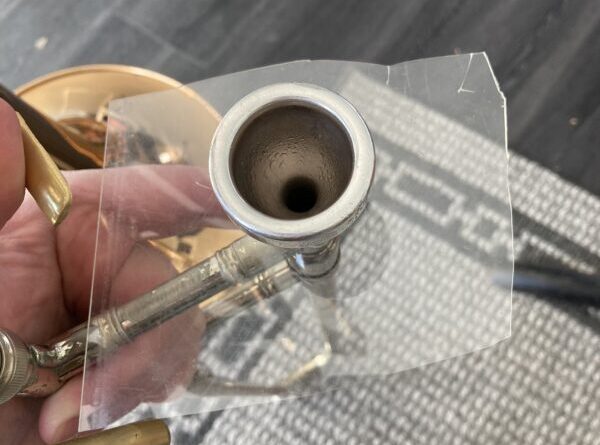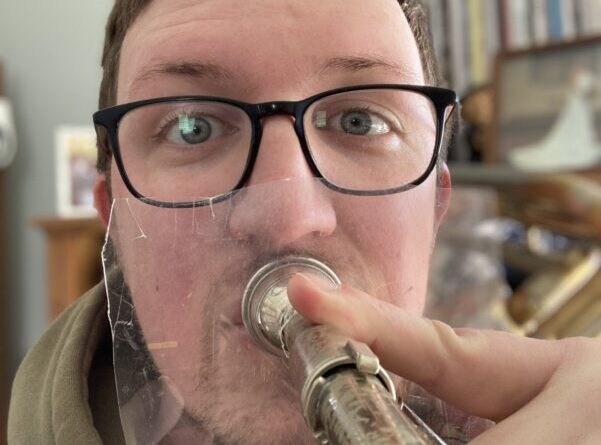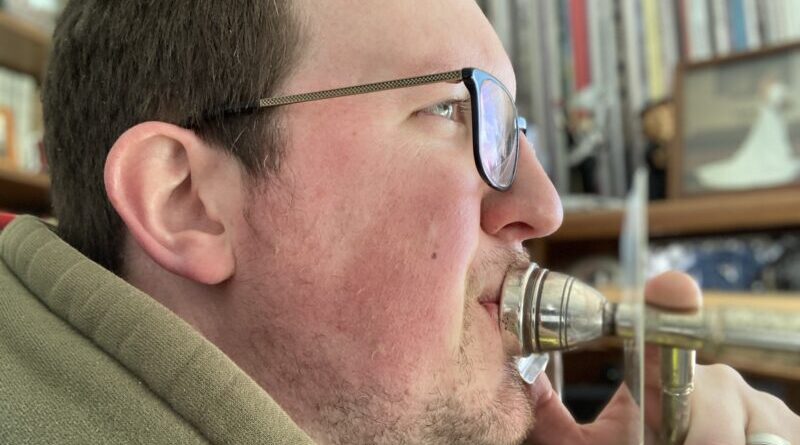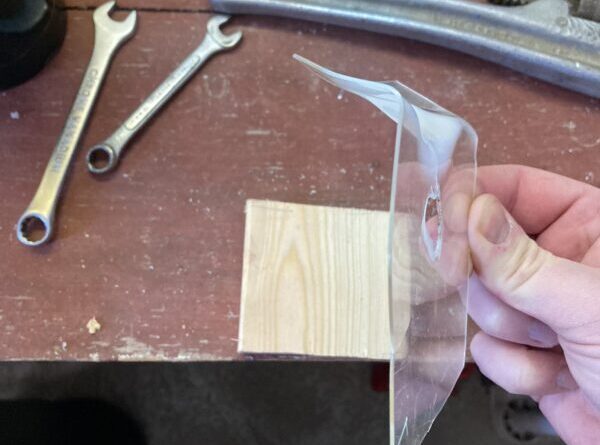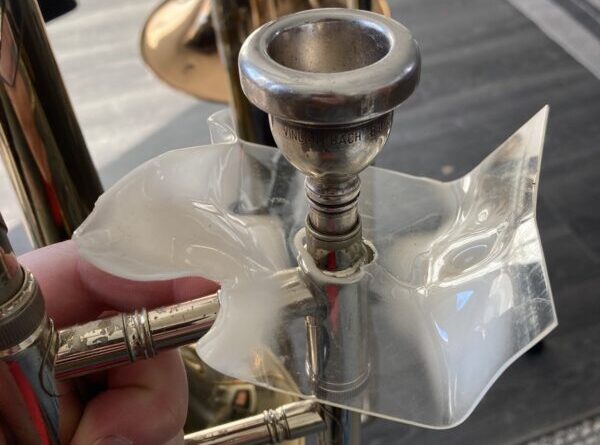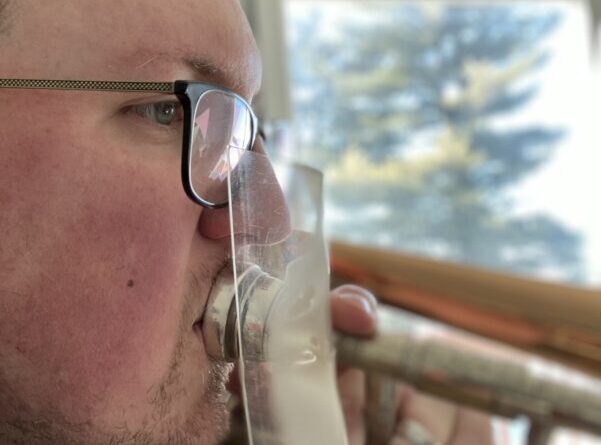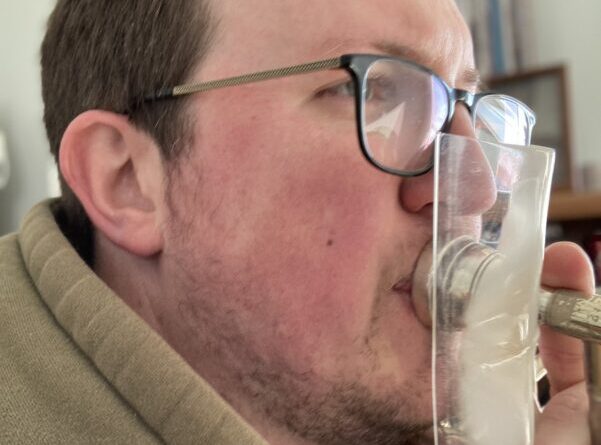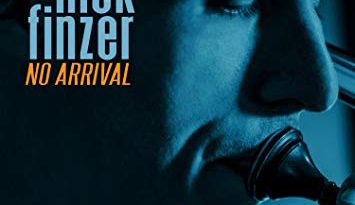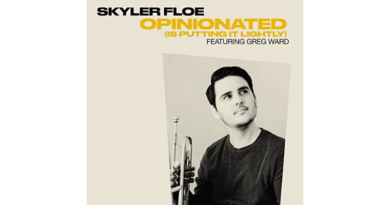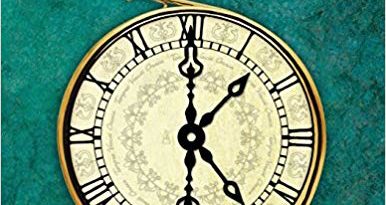The Brass Shield: A POSSIBLE Alternative To Playing Masks
Note: This design has NOT been tested for safe use against the spread of aerosols. This is a DIY project that has no proper or formal research behind the design. This article is merely a starting alternative to see if it would work. Please continue using safe measures recommended by the CDC, your music institutions, and organizations. Continue wearing a mask and maintain a safe distance.
Recently, the spring semester began for the four colleges and universities that I am involved with on a weekly basis. As music research studies are still learning more about the effects of aerosols and wind instruments, many schools are doing their best to accommodate a safe music-making environment for their students.
All of my schools are fulfilling every possible recommendation from recent studies, whether it’s having adequate spacing distance for wind and brass players, bell covers for brass players, condensation retrievers for brass players, and playing masks with slits for wind and brass students.
Early during the pandemic, I gave a review on MoistureGuard’s bell cover that I still use every day. Recently, I was thinking about other possibilities that could be a possible solution for safety but not hindering pedagogical aspects of playing.
Enter The Brass Shield (cliché I know)… As I wondered if this could work, I found a spare piece of thin plexiglass in the garage (as one usually finds in the garage…) and began drilling a hole that was the approximate shank size of my bass trombone mouthpiece. After a few broken pieces and being as gentle as possible, I came up with this…
As the concept came to fruition, I realized that the “shield” should be curved inward, similar to face shields. Since I do not own a face shield, a friend suggested simply heating the edges to bend the plastic. Living in rural Ohio, you sort of make things work as best as you can (maybe someday I’ll post the video). By heating the plastic, I was able to bend the plastic enough before it caught on fire or cracked (again…maybe someday I’ll post the video).
UPDATE: working on other concepts with this, here is a bent version after a some heat to the plastic. pic.twitter.com/PCxDUxqABl
— Jeremy Smith (@lastrowmusic) February 7, 2021
Here are some of my questions and thoughts about this design. Shoot me an email for what you think or comment on the post on Twitter.
- Has anybody experimented with this?
- Is it/can it be safe?
- If a plastic square were attached to a music lyre would that also work?
- Could rubber washers allow for one shield to be used on different size leadpipes and other instruments?
Again, the purpose of this Brass Shield is to have the contraption attached to the instrument while playing rather than wearing a playing mask – that’s attached to me. This shield gives me a lot more freedom in playing with a good sound, and not having to work my mouthpiece into the playing mask quickly before having to play.
Note: This design has NOT been tested for safe use against the spread of aerosol. This is a DIY project that has no proper or formal research behind the design. This article is merely an alternative to see if it would work. Please continue using safe measures recommended by the CDC, your music institutions, and organizations. Continue wearing a mask and maintain a safe distance.
